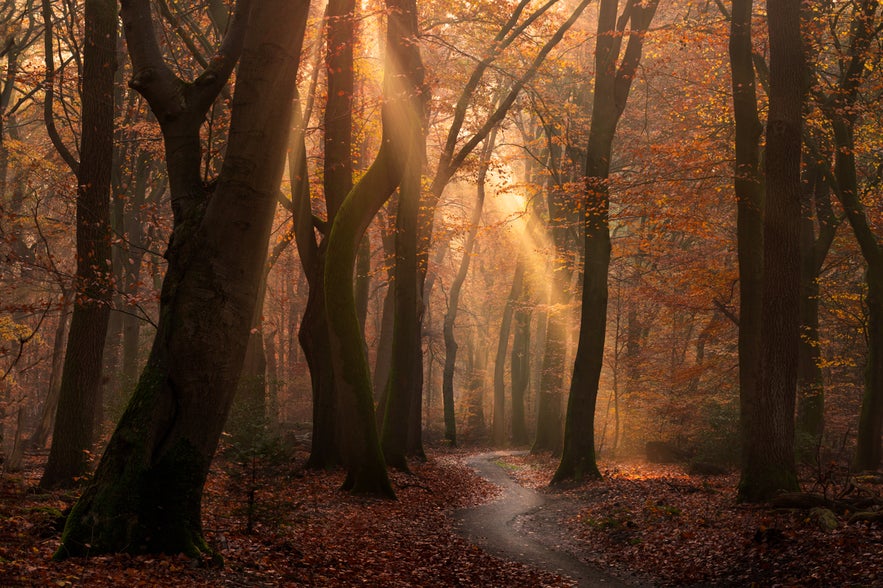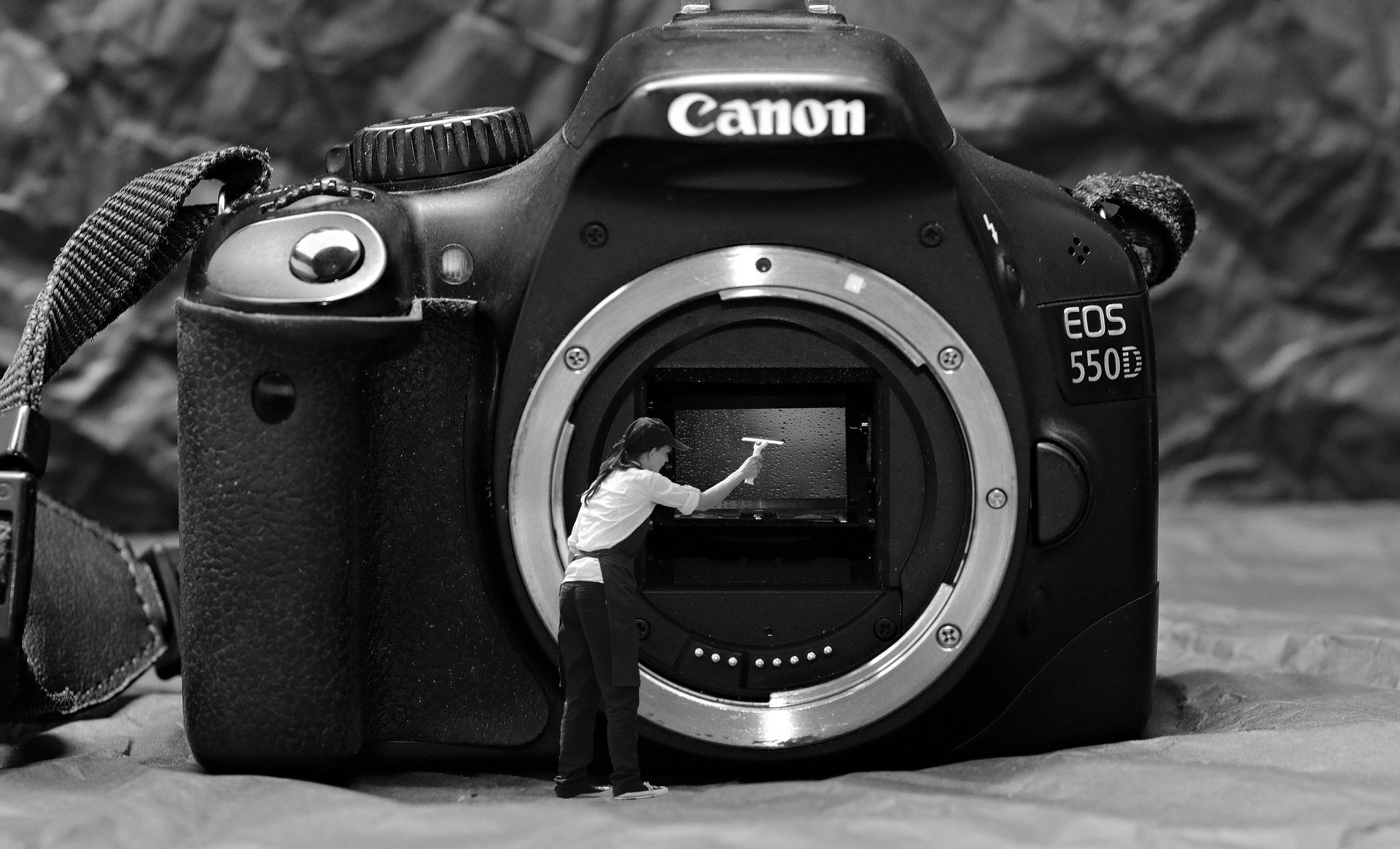
While one of the hallmarks of landscape photography is the use of a wide angle lens to capture the expansive grandeur of nature and to create a sense of depth, there are times when opting for a longer focal length can increase your creativity and lead to better photographs.
- Check out these Photography Tutorials
- Learn all about Chromatic Aberration – What it is and How to Avoid it
- Discover How to Use Complementary Colours in Photography
Telephoto lenses most definitely have a place in the world of landscape photography. These highly effective and versatile lenses can have a large impact upon your work, enabling you to improve upon your photography by seeing the world differently – the result being a portfolio of more diverse and unique images.
Not convinced yet? Let’s have a look at what a telephoto lens actually is as well as our top ten tips for using one in-field to create stunning landscape images.
- See also: Best Lenses for Night Photography
What is a Telephoto Lens?
 A telephoto lens is any lens with a focal length longer than 50mm. Photo by: 'allupinc, Pixabay'.
A telephoto lens is any lens with a focal length longer than 50mm. Photo by: 'allupinc, Pixabay'.
Generally speaking, a telephoto lens is considered as any lens with a focal length longer than 50mm.
The aim of such a lens is to magnify subjects at moderate to far distances, so that you’ll invariably be able to take a photo of something that is further away within the landscape.
- See also: The Best Lenses for Wildlife Photography
Are Telephoto Lenses Good for Landscape Photography?
A telephoto zoom is one of the best lenses that you can have in your camera kit for landscape photography. That’s because such a lens will allow you to isolate objects and other details within the landscape, with a much more narrow depth of field. You can zoom in on lines, patterns, layers, textures and even silhouettes for more abstract images or when you are faced with a scene with a lack of foreground interest.
 Telephoto lenses are great for abstract image focusing on details. Photo by: 'Pxhere'.
Telephoto lenses are great for abstract image focusing on details. Photo by: 'Pxhere'.
In contrast to wide angle lenses, which can exaggerate leading lines and emphasise subjects with extraordinary sense of depth, telephoto lenses are great for more intimate scenes, where the focus is on shape and form rather than large, far-reaching vistas.
Virtually every camera manufacturer has at least one telephoto lens in their line-up, so it isn’t difficult to find one to suit your particular type of camera. Some of the more popular telephoto zoom lenses on the market today include the Canon EF 70-200mm f/4L USM, Sony FE 70-200mm f/2.8 G Master and the Nikon AF-P 70-300mm f/4.5-5.6E ED VR. Even third-party manufacturers produce excellent telephoto lenses to fit full frame cameras of major brands, of which the more notable are Sigma and Tamron.
So whether you are after a mid-range telephoto or a super telephoto zoom lens, there will no doubt be something available out there to fit your needs.
When Should I Use a Telephoto Lens?
Telephoto lenses may be used to make a distant subject appear closer in your frame, as well as to fill the frame in a meaningful way. They’re great for wildlife photography, for isolating details when out and about in nature, as well as for capturing action, photographing the moon and deep-sky astrophotography when you don’t have access to a telescope.

A telephoto lens will also give you room to experiment, particularly when there is a messy or lack of interesting foreground in the scene. Rather than capturing a wide angle view of the clutter, you’ll be able to isolate certain elements, to create interest in a different way.
Top 8 Tips for Landscape Photography with a Telephoto Lens
During our photo tours, we sometimes hear photographers saying that they have trouble with using telephoto lenses, simply because they aren’t able to capture enough of the surrounding landscape. Some photographers find it difficult to make a composition with a telephoto lens, whereas others just don’t know how to use them effectively or even where to even begin.
Using a telephoto lens for landscape photography can be a little bit difficult at first as it requires a whole different approach to using a wide angle lens. So to help you make the most out of this piece of equipment, here are our top eight tips on how to use a telephoto lens for landscape photography.
 Check out our top tips for photography using a telephoto lens to make the most out of your landscape photography. Photo by: 'Albert Dros'.
Check out our top tips for photography using a telephoto lens to make the most out of your landscape photography. Photo by: 'Albert Dros'.
Tip #1. Use a Tripod
The thing about telephoto lenses is that most of the time, they’re big. Oftentimes, they can also be very heavy. As such, it goes without saying that when shooting telephoto images in-field, the weight of the lens will leave your camera prone to shake. This can affect image quality, so in order to ensure optimum sharpness in your images, the best thing to do is to mount your camera to a tripod.
 Use a tripod to help stabilise your telephoto lens. Photo by: 'Thomas B, Pixabay'.
Use a tripod to help stabilise your telephoto lens. Photo by: 'Thomas B, Pixabay'.
If your telephoto lens comes with a tripod mount ring, then it is best to use that rather than to mount the camera to the tripod how you normally would. The tripod mount ring will help to balance the lens, meaning there will be less strain upon your tripod head. When unbalanced, a heavy lens can cause your tripod head to fall or to move about when you are lining up for a shot. The result can be extremely annoying, particularly when you lose that perfect frame of composition.
While it is possible to handhold a telephoto lens when photographing landscapes, you’ll likely have to use a much higher ISO than you would if you were to have your camera on a tripod. This increases the likelihood of introducing more noise into your images, so where possible, use a tripod when shooting with longer focal lengths.
Tip #2. Increase the ISO
This brings us to our next point, which is that when shooting with a telephoto lens, you’ll benefit a lot from increasing the ISO, even when shooting on a tripod.

Due to their weight and general size, telephoto lenses are prone to moving – with your body if you’re shooting handheld and with the wind if you’re using a tripod. Either way, you will no doubt experience some degree of camera shake, including during the moment that you release the shutter, when electronic components move internally within your camera.
Any movement or shake can and will affect the overall quality of your images so where possible, you should increase your camera’s ISO sensitivity. By shooting at a higher ISO, you’ll be able to capture sharper images with your telephoto lens for better landscape photography.
Tip #3. Focus with Live View
Given that telephoto landscape photography is all about the details, being zoomed in to such long focal lengths will mean that your viewer will be able to see every single aspect of your shots, from the trivial components all the way through to the absolute nitty-gritty points. This will leave you with very little room for error when focusing. In fact, it will be extremely evident even if your subject is only slightly out of focus.

To ensure a sharp focus when shooting with a telephoto lens, try focusing with Live View on the back of your camera’s LCD screen. Most digital cameras these days have this function, while some even have LCD monitors that can tilt in different directions, making focusing all the more easier.
Basically, Live View gives you the option to use the LCD display screen of your camera in place of the small viewfinder, giving you a much larger representation of the scene than you would be able to see with your naked eye.
By using Live View, you’ll be able to magnify your subject so that you can focus more precisely on a certain area. It’s especially useful when the subject is far away, such as with a mountain or a tree in the distance.
Tip #4. Use a Remote Shutter Release
The remote shutter release is usually one of the last things on a photographer’s mind when it comes to purchasing accessories. However, it is an invaluable piece of equipment for landscape photography, particularly when using a heavy telephoto lens.
 Using a remote shutter release can help you to obtain sharper images with a telephoto lens. Photo by: 'Albert Dros'.
Using a remote shutter release can help you to obtain sharper images with a telephoto lens. Photo by: 'Albert Dros'.
Why? Well, a remote shutter release enables you to trigger your camera’s shutter without the need for you to touch your camera. This reduces the amount of camera shake that you introduce upon physical contact when pressing the shutter release button, which can help you to take much sharper and better landscape images.
Remote shutter releases may be connected to your camera either wirelessly, by Bluetooth or by using a cable. You can usually stand a small distance away from your camera and trigger the camera’s shutter by pressing the button on the remote.
The range of remote shutter releases on the market vary quite markedly in price from cheap to expensive. You can usually find great options made by third-party manufacturers for a fraction of what you would pay if you were to purchase one made by a major camera brand.
If you don’t have a remote shutter release or if you’re not keen on investing in one, then consider using the shutter release delay function on your camera. Most DSLRs will allow you to set a 2-second delay, meaning that after you press button, there will be a couple of seconds before the shutter is released. This is enough time for your camera to settle from the initial movement introduced by your physical contact, thereby reducing camera shake.
Tip #5. Turn On Image Stabilisation
Image stabilisation (also known as vibration reduction) is a function available on most telephoto lenses that reduces the risk of taking blurry images. Basically, these lenses have a floating lens element which moves automatically to compensate for camera shake when the image stabilisation feature is turned on.
This feature is particularly useful when shooting handheld with a telephoto lens. It’s also a good idea to switch it on for landscape photography in windy conditions, as the image stabilisation in your telephoto lens can counteract the vibration and movement introduced by the wind hitting your tripod.
Tip #6. Select a Mid-Range Aperture
Typically in landscape photography with a wide angle lens, the aim is to have everything in focus from foreground through to the back. This often means shooting with smaller apertures – depending on your workflow and the scene, this can from f/8 through to f/16 and often involves taking several images for focus-stacking.
Shooting with a telephoto lens is not entirely different. You’ll still want to shoot at the optimum aperture range for your lens to ensure that you’ll end up with the sharpest images. In landscape photography, this is referred to as the ‘sweet spot’ of your lens and with most telephoto lenses, it will fall somewhere between f/8 and f/11. Here’s how to find the sweet spot of your lens if you’ve never done it before.
Not only will you take sharper images with a telephoto lens between these apertures, but you’ll also ensure an adequate depth of field.
Tip #7. Compress the Scene
One of the benefits of using a telephoto lens is having the ability to compress the perspective of the scene. What does this mean exactly? Well, to put it simply, when you use a telephoto lens to shoot parts of the landscape that are further away from your camera, the result is that they will appear to be bigger and compressed closer to the foreground than they actually are.
One such application for this technique is moon photography. By using a telephoto lens, you can make the moon in the background seem extremely large in comparison to your subject in the foreground, such as a mountain, simply by being further away. If you were to shoot the same scene at the same distance with a telephoto lens, then both the moon and the mountain would seem incredibly small.
 Compressing the scene is a characteristic feature of forest photography. Photo by: 'Albert Dros'.
Compressing the scene is a characteristic feature of forest photography. Photo by: 'Albert Dros'.
Compressing the scene with a telephoto lens has many uses. You can use it for enchanting forest photography, to capture tendrils of fog and mist in the landscape, as well as to photograph lightning. The possibilities are endless!
Tip #8. Don’t Frame Too Tightly
Last but not least, when using a telephoto lens for landscape photography, it’s important that you don’t frame your shots too tightly. While telephoto lenses are great for excluding unnecessary elements or distractions within your composition, a tight frame can reduce the impact of your images, making objects appear as though they have been cut off at the edges.
When you’re out shooting in-field, make sure to check the edges of your frame and to give each element enough breathing space for a thoughtful and well-balanced image.
About the author: Serena Dzenis is a landscape photographer based in Iceland. You can find more of her work on her website or by following her on Facebook and Instagram.
Have you got any other tips for landscape photography with a telephoto lens? What has worked for you and what hasn’t? Leave a comment below!












